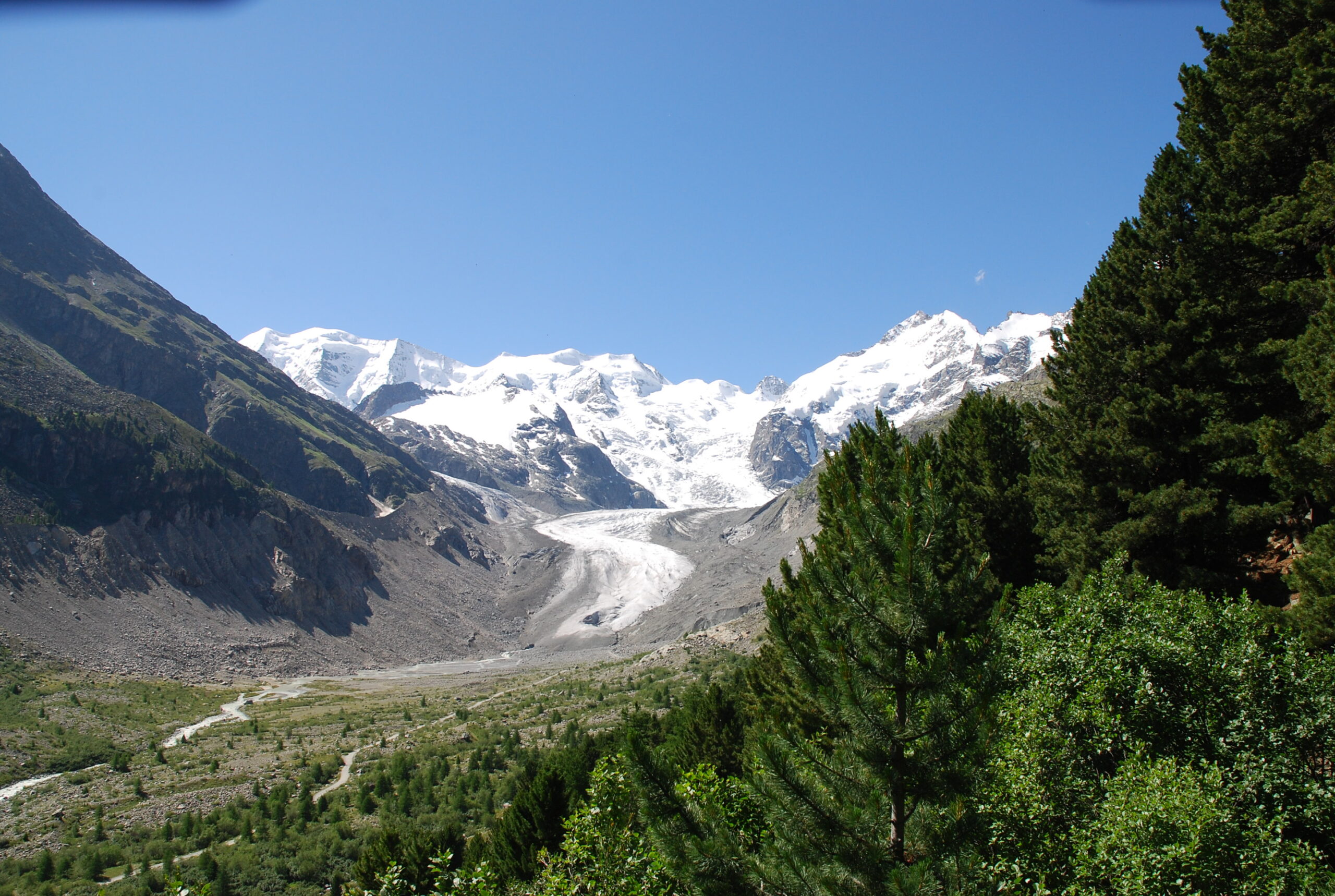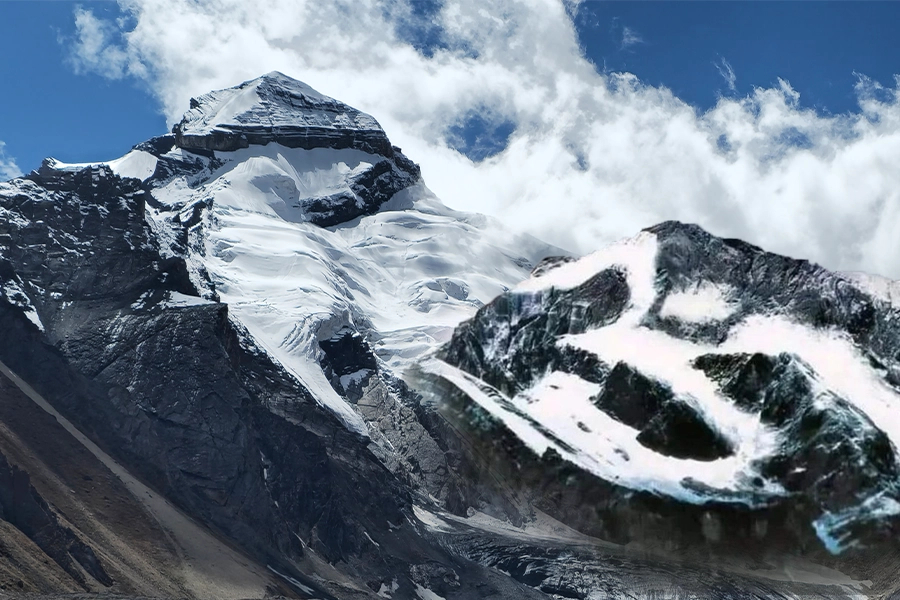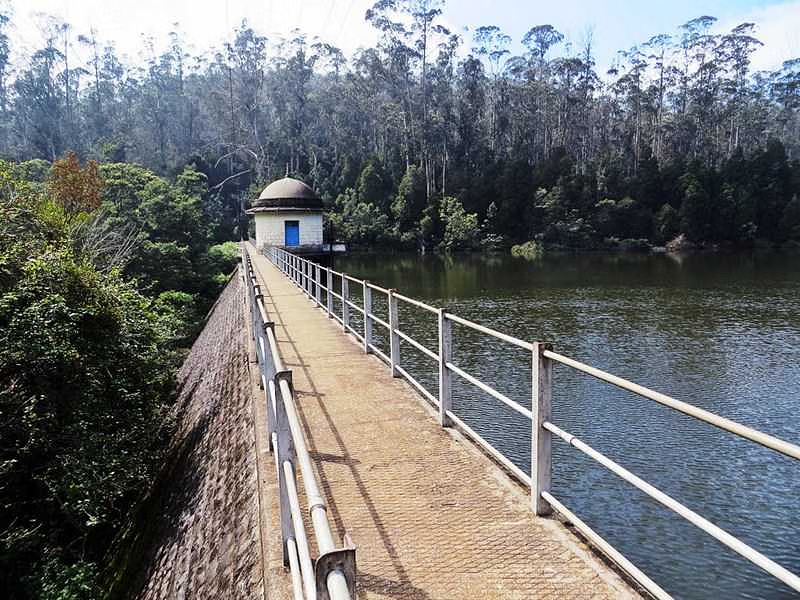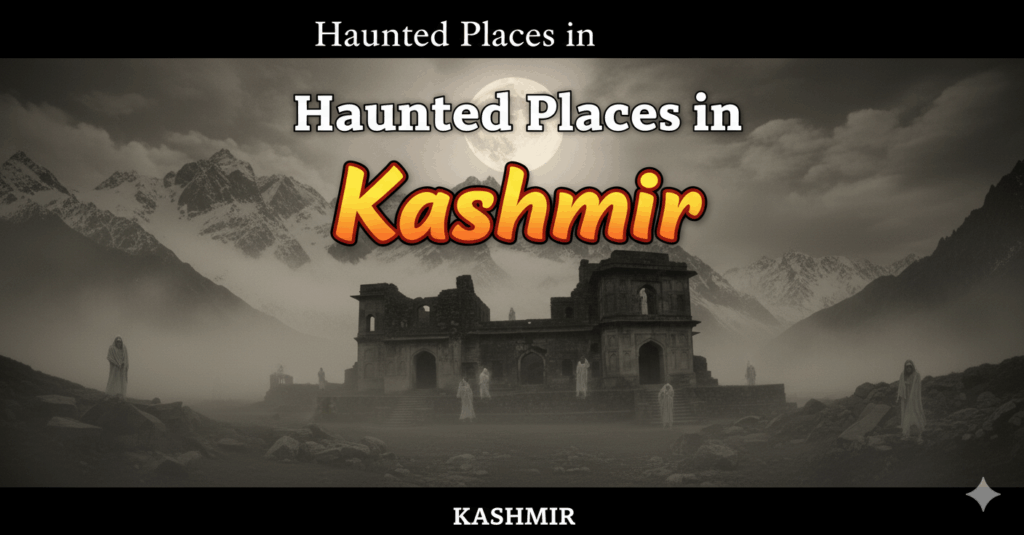Adi Kailash, also known as Chhota Kailash, stands as a sacred mirror to Mount Kailash in Tibet. Located in Uttarakhand’s Pithoragarh district near the Indo-Tibet border, this mystical peak offers spiritual seekers and adventurers a profound alternative to the more remote Tibetan Kailash. With its striking resemblance to Lord Shiva’s famed abode and the pristine Parvati Sarovar lake nearby, timing your visit to this sacred mountain is crucial for a successful pilgrimage and trek.
Before determining the best time to visit Adi Kailash, it’s important to understand its geographical position and religious importance. Situated at the tri-junction of India, Tibet, and Nepal in the upper Kumaon region, Adi Kailash rises majestically in India’s territory, making it accessible without international permits.
Table of Contents
Adi Kailash Location and Geographical Setting

Adi Kailash stands at an impressive elevation of approximately 18,600 feet (5,669 meters) above sea level. This significant height creates a microclimate with distinct seasonal patterns that directly impact accessibility and trekking conditions. Located in Pithoragarh District of Uttarakhand, the mountain is approximately 80 km from the nearest major town of Dharchula, with Gunji (at 11,500 feet) serving as the base camp for the final trek.
The journey involves approximately 22 km of trekking from Gunji to Adi Kailash, typically taking 2-3 days to complete round-trip. The terrain varies from alpine meadows to moraines and seasonal snow fields, making weather conditions a critical factor in planning your visit.
Best Time to Visit Adi Kailash: Quick Reference Guide
| Season | Months | Temperature Range | Accessibility | Crowd Level | Best For |
|---|---|---|---|---|---|
| Summer | May-June | 10-20°C (Day) 0-8°C (Night) | Good | Moderate | First-time trekkers, warmer weather |
| Monsoon | July-August | 12-18°C (Day) 5-10°C (Night) | Poor/Dangerous | Low | Not recommended |
| Post-Monsoon | Sept-Mid Oct | 8-15°C (Day) -5-8°C (Night) | Excellent | High | Clear views, photography |
| Winter | Mid Oct-April | -15-5°C (Day) -15–5°C (Night) | Closed | None | Not accessible |
Best Time to Visit Adi Kailash: Season by Season Analysis
The Adi Kailash region experiences four distinct seasons, each with unique characteristics that affect accessibility, trekking difficulty, and overall experience. Here’s a detailed month-by-month breakdown:
Summer Season (May to June) – First Optimal Window
Early summer represents one of the two optimal windows for visiting Adi Kailash:
Pros:
- Roads typically open by mid-May after winter closures
- Moderate temperatures ranging from 10-20°C during daytime
- Clear visibility for panoramic Himalayan views
- Manageable water crossings as initial snowmelt has stabilized
- Vibrant alpine flowers beginning to bloom
- High chance of completing the full trek without weather disruptions
Cons:
- Some passes may still have snow patches requiring careful navigation
- Evenings and nights remain cold (0-5°C)
- Occasional pre-monsoon showers possible by late June
Recommendation: Ideal for most trekkers and pilgrims, especially those preferring warmer conditions without monsoon complications.
Monsoon Season (July to August) – Avoid Period
The monsoon brings significant challenges to the Adi Kailash region:
Pros:
- Lush green landscapes with abundant vegetation
- Fewer visitors mean less crowded trails
- Potential for dramatic cloud formations and atmospheric views
Cons:
- High risk of landslides and road blockages
- Swollen rivers and dangerous water crossings
- Slippery trails increasing accident risk
- Poor visibility often obscuring mountain views
- Leeches and insects more prevalent
- High probability of trek cancellations due to safety concerns
Recommendation: Not recommended for visitors. Most tour operators suspend operations during this period due to safety risks.
Post-Monsoon Season (September to Mid-October) – Prime Time
The post-monsoon period represents the second ideal window for the Adi Kailash yatra:
Pros:
- Clearest skies of the year with exceptional visibility
- Stable weather patterns with minimal precipitation
- Pleasant daytime temperatures (8-15°C)
- Refreshed landscapes after monsoon with vibrant autumn colors
- Stable trail conditions with reduced landslide risk
- Higher success rate for complete trek completion
Cons:
- Nights grow increasingly cold (down to -5°C by October)
- Days shorten noticeably by October
- Higher visitor numbers, especially during holiday periods
Recommendation: The absolute best time to visit Adi Kailash for optimal weather conditions and spectacular views. Early October typically offers the perfect balance of clear weather and manageable temperatures.
Winter Season (Mid-October to April) – Inaccessible Period
Winter renders the Adi Kailash region largely inaccessible:
Pros:
- Pristine snow-covered landscapes (visible from lower elevations)
- Complete solitude and wilderness experience
Cons:
- Extreme cold with temperatures dropping to -15°C or lower
- Heavy snowfall blocks mountain passes and trails
- Road access to starting points typically closed
- High risk of avalanches and weather emergencies
- Essential services and support unavailable
- Complete trek to Adi Kailash peak impossible for all but extreme mountaineers
Recommendation: Not feasible for regular visitors or pilgrimages. The region effectively closes for tourism and trekking during these months.
Adi Kailash Temperature and Weather Patterns

Understanding the temperature and weather patterns helps in choosing the best time for your visit:
Adi Kailash Temperature Month by Month
| Month | Day Temperature | Night Temperature | Weather Conditions | Recommendation |
|---|---|---|---|---|
| January | -5°C to 2°C | -15°C to -10°C | Heavy snow, extreme cold | Not accessible |
| February | -3°C to 3°C | -12°C to -8°C | Heavy snow, extreme cold | Not accessible |
| March | 0°C to 5°C | -10°C to -5°C | Snow, very cold | Not accessible |
| April | 3°C to 10°C | -7°C to 0°C | Snow melting begins, cold | Not accessible |
| May | 8°C to 15°C | -2°C to 5°C | Spring transition, moderate | Good option |
| June | 10°C to 20°C | 0°C to 8°C | Pleasant days, cool nights | Ideal time |
| July | 12°C to 18°C | 5°C to 10°C | Monsoon rains, humid | Avoid (unsafe) |
| August | 12°C to 18°C | 5°C to 10°C | Heavy monsoon, humid | Avoid (unsafe) |
| September | 10°C to 15°C | 2°C to 8°C | Post-monsoon clearing, pleasant | Excellent choice |
| October | 5°C to 12°C | -5°C to 5°C | Clear, increasingly cold | Best overall time |
| November | 0°C to 8°C | -10°C to -2°C | Very cold, snow begins | Not recommended |
| December | -5°C to 2°C | -15°C to -8°C | Heavy snow, extreme cold | Not accessible |
Note: Temperatures can vary significantly based on exact elevation and weather systems. These ranges reflect conditions at different points of the trekking route.
Adi Kailash Weather Considerations
The Adi Kailash weather patterns require special consideration when planning your visit:
Wind Factors: Strong winds are common at higher elevations, especially in early summer and late autumn. Wind chill can decrease perceived temperatures by 5-10°C.
Precipitation Patterns: Even during optimal seasons, afternoon clouds are common. Morning views tend to be clearest, making early starts advisable.
Sudden Changes: Mountain weather can change rapidly. Clear mornings can transform into stormy afternoons, particularly during transitional seasons.
UV Exposure: Solar radiation is intense at high altitudes, even when temperatures are low. Proper sun protection is essential in all seasons.
Acclimatization Impact: Weather perception varies based on acclimatization. Temperatures that feel extreme on arrival often become more manageable after proper adjustment to altitude.
How to Reach Adi Kailash: Detailed Transportation Guide

The journey to Adi Kailash involves multiple stages, with accessibility highly dependent on seasonal conditions:
Stage 1: Reaching Dharchula
From Delhi:
- By Air: Fly to Pithoragarh’s Naini Saini Airport (reopened in 2022, limited flights) or Pantnagar Airport (230 km from Dharchula)
- By Train: Travel to Kathgodam railway station (280 km from Dharchula)
- By Road: Delhi to Dharchula (570 km) via Tanakpur and Pithoragarh
From Other Major Cities:
- From Dehradun: Approximately 480 km by road
- From Haridwar: Approximately 450 km by road
- From Haldwani: Approximately 275 km by road
Stage 2: Dharchula to Gunji
- Road Journey: Dharchula to Tawaghat (24 km) by motor road
- Restricted Zone Travel: Tawaghat to Gunji (80 km) through ITBP-monitored areas
- Transportation Options: ITBP/government vehicles or pre-arranged jeeps with permits
Stage 3: The Trek from Gunji to Adi Kailash
- Trek Distance: Approximately 22 km one way
- Elevation Gain: From 11,500 feet at Gunji to 18,600 feet at Adi Kailash
- Key Points: Gunji → Nabidhang → Jollingkong → Adi Kailash Base
- Duration: 2-3 days (round trip, including acclimatization)
Seasonal Road Access Considerations
- May to June: Roads typically open by mid-May, with occasional blockages due to late snow or landslides
- July to August: High risk of road closures due to landslides and washouts
- September to Mid-October: Generally reliable road access with minimal disruptions
- Mid-October to April: Roads closed beyond Tawaghat due to snow and hazardous conditions
Adi Kailash Permit Requirements and Documentation
Visiting Adi Kailash requires several permits due to its proximity to international borders:
Required Permits
- Inner Line Permit (ILP): Mandatory for all visitors to enter restricted border areas
- Forest Department Permit: Required for trekking through protected forest areas
- Kumaon Mandal Vikas Nigam (KMVN) Registration: For organized tours
- Special Area Permit: For specific sensitive zones near the border
Documentation Required for Permits:
- Valid government photo ID (Aadhar, Passport, Voter ID)
- 4-6 passport-sized photographs
- Address and identity proof
- Detailed travel itinerary
- Health and fitness certification (for trekking permit)
Most permits are obtained in Dharchula or Pithoragarh, with processing times ranging from 1-2 days. Inner Line Permits typically cost between ₹200-500 per person, while Forest Permits range from ₹150-300 per person. These permits have validity periods of 7-15 days depending on your itinerary.
Important Notes:
- Foreign nationals face additional restrictions and may require special clearances
- Permit rules change periodically; verify requirements before planning
- Group permits are typically easier to obtain than individual permits
- Most organized tours handle permit arrangements as part of their package
Adi Kailash Trek Details: What to Expect
The Adi Kailash trek presents both physical challenges and spiritual rewards:
Trek Difficulty and Terrain
- Difficulty Level: Moderate to challenging
- Physical Demands: Good fitness required for high-altitude trekking
- Technical Requirements: No technical climbing skills needed during optimal seasons
- Altitude Considerations: Significant elevation gain requiring proper acclimatization
- Terrain Types: Forest paths, rocky trails, meadows, stream crossings, moraines
Adi Kailash Trek Route Breakdown
| Section | Distance | Elevation Change | Terrain | Challenges |
|---|---|---|---|---|
| Gunji to Nabidhang | 8 km | 11,500 to 12,500 ft | Mixed forest and open trails | Moderate incline, stream crossings |
| Nabidhang to Jollingkong | 7 km | 12,500 to 14,500 ft | Alpine meadows, rocky paths | Steep sections, thinner air |
| Jollingkong to Adi Kailash Base | 7 km | 14,500 to 16,500 ft | Rocky moraines, potential snow | Altitude effects, weather exposure |
| Base to Parvati Sarovar | 3 km | 16,500 to 17,000 ft | Mixed terrain | Weather variability, altitude |
Key Trek Highlights:
- Panoramic views of Indo-Tibet border ranges
- Sacred Parvati Sarovar lake
- Alpine meadows with rare Himalayan flora
- Direct view of Adi Kailash peak
- Ancient Om Parvat with natural Om formation
- Traditional Kumaoni villages en route
Adi Kailash Yatra Cost Breakdown
The cost of an Adi Kailash yatra varies based on several factors, including season, group size, and service level:
Cost Components and Estimates
| Component | Budget Option | Standard Option | Premium Option |
|---|---|---|---|
| Transportation (Delhi to Delhi) | ₹12,000-15,000 | ₹18,000-22,000 | ₹25,000-30,000 |
| Accommodation | ₹8,000-10,000 | ₹12,000-15,000 | ₹20,000-25,000 |
| Meals and Refreshments | ₹5,000-7,000 | ₹8,000-10,000 | ₹12,000-15,000 |
| Guide and Porter Services | ₹8,000-10,000 | ₹10,000-12,000 | ₹12,000-15,000 |
| Permits and Documentation | ₹2,000-3,000 | ₹2,000-3,000 | ₹2,000-3,000 |
| Emergency Services/Insurance | ₹2,000-3,000 | ₹3,000-4,000 | ₹5,000-7,000 |
| Total Estimated Cost | ₹37,000-48,000 | ₹53,000-66,000 | ₹76,000-95,000 |
Seasonal Cost Variations:
- Peak season (September-October) prices typically 10-15% higher
- Early season (May) may offer discounts of 5-10%
- Group size significantly impacts per-person costs
Additional Optional Expenses:
- Equipment rental: ₹5,000-8,000 if not included in package
- Personal porter: ₹1,000-1,500 per day
- Specialized guides: ₹2,500-3,500 per day
- Photography permits: ₹500-1,000 for professional equipment
Preparing for Different Seasons: Essential Packing
Your packing list should be tailored to the season of your visit:
May-June (Early Summer) Packing
- Layered clothing system with thermal base layers
- Warm fleece or down jacket for evenings
- Waterproof/windproof outer shell
- Sturdy hiking boots (waterproof)
- Sun protection (high SPF, hat, sunglasses)
- Light gloves and warm hat
- Trekking poles
- 3-season sleeping bag (-5°C comfort rating)
September-October (Post-Monsoon) Packing
- Enhanced thermal layers (mid and heavy weight)
- Heavier down jacket for evenings
- Insulated waterproof gloves
- Warm hat covering ears
- Thermal socks (multiple pairs)
- Face protection from wind
- 4-season sleeping bag (-10°C comfort rating)
- Chemical hand/foot warmers
Acclimatization and Health Considerations
The high altitude of Adi Kailash requires careful acclimatization:
Recommended Acclimatization Schedule:
- Day 1-2: Dharchula (915m) to Tawaghat (1,200m), overnight
- Day 3-4: Tawaghat to Gunji (3,500m), spend two nights
- Day 5: Gunji to Nabidhang (3,800m), overnight
- Day 6: Nabidhang to Jollingkong (4,200m), overnight
- Day 7: Day trip to Adi Kailash base and return to Jollingkong
- Day 8: Return to Gunji
Altitude Sickness Prevention:
- Ascend gradually (no more than 300-500m sleeping elevation per day)
- Stay hydrated (4-5 liters of water daily)
- Consider preventive medication after medical consultation
- Recognize and respect symptoms if they occur
Exploring Beyond: Extending Your Uttarakhand Journey
After experiencing the divine presence at Adi Kailash, consider extending your spiritual journey to explore other sacred destinations across Uttarakhand. You might want to experience the serene beauty of the lake district with our Nainital tour package from Mumbai, find spiritual solace at the yoga capital through Rishikesh tour package from Mumbai, or embark on another sacred pilgrimage with Kedarnath tour packages from Mumbai. For comprehensive spiritual and cultural experiences, explore our Uttarakhand tour packages from Mumbai to discover the incredible diversity of the Himalayan state.
Final Thoughts: Choosing Your Ideal Time
The best time to visit Adi Kailash ultimately depends on your priorities:
- For clearest views and stable weather: Early October
- For fewer crowds and lower costs: Late May to early June
- For moderate temperatures: June or September
- For photography: Late September to early October for dramatic light and clarity
- For spiritual pilgrimage: Align with auspicious dates in May-June or September-October
Regardless of when you choose to visit, Adi Kailash rewards thorough preparation and respect for its natural rhythms. By selecting the optimal season and preparing accordingly, you can maximize your chances of a successful and meaningful journey to this sacred Himalayan marvel.
You can visit us at VDP Travels, Neighbourhood Complex, F- 5, near SBI Bank, Sector 4, Nerul, Navi Mumbai, Mumbai, Maharashtra 400706. For comprehensive Adi Kailash pilgrimage packages and customized spiritual tour experiences, call +91 99675 18405, or visit https://vdp-travels.com.
Best Time to Visit Adi Kailash- FAQs
What is the best time to visit Adi Kailash for first-time pilgrims?
Early October offers the perfect combination of clear weather, stable conditions, and spectacular mountain views, making it ideal for first-time visitors.
How to reach Adi Kailash from Delhi?
Travel from Delhi to Dharchula (570 km), then to Gunji via restricted border roads, followed by a 22 km trek to Adi Kailash base.
What permits are required for Adi Kailash visit?
You need Inner Line Permit, Forest Department Permit, and KMVN registration, costing approximately ₹500-800 total per person.
What is the Adi Kailash temperature in October?
Daytime temperatures range from 5-12°C while nights can drop to -5°C to 5°C, requiring warm clothing and proper gear.
How much does Adi Kailash yatra cost?
Total costs range from ₹37,000-95,000 depending on service level, with standard packages averaging ₹53,000-66,000 per person.
What is the height of Adi Kailash in feet?
Adi Kailash stands at approximately 18,600 feet (5,669 meters) above sea level, making proper acclimatization essential.
Is the Adi Kailash trek difficult for beginners?
The trek is moderate to challenging, requiring good fitness levels and high-altitude trekking experience due to significant elevation gain.
What weather conditions should I expect during the trek?
Expect cold nights, moderate days, potential afternoon clouds, and rapidly changing weather requiring flexible planning and proper gear.
Can I visit Adi Kailash during monsoon season?
Monsoon visits (July-August) are strongly discouraged due to landslide risks, dangerous river crossings, and poor visibility.
How many days are needed for complete Adi Kailash yatra?
Plan for 8-12 days total including travel to Dharchula, acclimatization, trekking, and return journey for a safe and complete experience.





